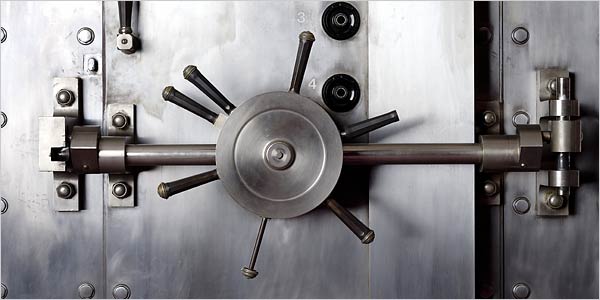| Want to send this page or a link to a friend? Click on mail at the top of this window. |
More Special Reports |
| Posted April 1, 2007 |
| 4.1.07 | |
| IDEA LAB | |
 |
|
| Can Poor People Be Taugh to Save? A network theory for building a savings account. By Rachel Louise Snyder |
Why can't poor people save money? The answer might appear blindingly obvious: They don’t earn enough. But that explanation didn’t satisfy Stephen Brobeck — it was too easy, too defeatist. As the executive director of the Consumer Federation of America for nearly three decades, he has watched people increase debt and decrease savings. The trend disturbs him. While Brobeck thinks that everyone should save more, he is particularly concerned about the poorest Americans. About nine million households have effectively no financial assets — nothing to fall back on for emergencies or retirement. And it was with them in mind that Brobeck embarked on a social experiment to change people’s savings habits.
To get people to save, however, Brobeck first needed to know why they didn’t. So the C.F.A. enlisted John Caskey, a professor of economics at Swarthmore College, who arranged for anthropologists to conduct in-depth interviews in two low-income communities, one in urban San Jose, Calif., and one in rural Mississippi. “I had expected people would talk about the cost of not having a bank account or having a bad credit history,” Caskey said. “I thought they’d talk about financial inconvenience, but they instead talked about the stress.” In many cases, people didn’t save not because they actually couldn’t, Caskey discovered, but because they believed they couldn’t.
Part of that psychological barrier, Caskey found, was social pressure to not save; the minute people got a little surplus, friends and family would start asking for loans. There were other obstacles too. People in both communities feared losing welfare benefits if they accumulated cash. Many families didn’t even define savings monetarily; they talked about the things they would sell in desperation — baseball-card collections, heirlooms or other low-value assets.
Poring over Caskey’s research, along with other scholarly and financial literature, Brobeck concluded that the only way to get people to save was to reverse the social pressure while trying to effect modest institutional changes. The key, he realized, was to create a network of support for saving.
The network he came up with was America Saves. Initially begun as an experiment in Cleveland in 2000, the project has since expanded to more than 40 locations across the country and more than 75,000 enrolled participants. In Cleveland, Brobeck persuaded banks to set up special accounts requiring no or low minimum balances or fees for any Cleveland Saver. He asked large employers to offer regular workshops about debt, budgeting, saving and consumerism. Volunteers were taught to give presentations with punchy messages like “Build Wealth Not Debt!” Then he worked on peer pressure, reaching out to churches and community groups.
The Community of Faith Church was where Cheryl Wagner learned to save. Wagner, 51, never had more than pocket change and a series of unremarkable restaurant jobs — she defines them as the “hustle.” She worked on and off at McDonald’s for 15 years and then as a waitress at the International House of Pancakes. “You got to smile all day,” she says, not smiling. (Now she’s a home health aide.) She’s a mother of 2 and a grandmother of 11, and over the past couple of years she has changed addresses regularly. When her nephew died, and then her niece, and finally her father, each death compounded until they formed a single galvanizing epiphany: all those years hustling, and she was too broke to afford funeral flowers.
The realization was devastating and made her pay attention when her pastor, Jeffrey Sanders, brought in a Cleveland Saves representative in December 2005. Sanders encouraged church members to form a savers’ group, and Wagner was among the first to join. She set a goal to save $50 a month. This would be no small feat given her wages at the time — $2.13 an hour plus tips. But she wasn’t alone; 35 other churchgoers joined with her.
Wagner stopped eating out and battled the lure of the dollar stores in her neighborhood. “For 30 days I ate no sweets and no bread,” she says. “That saved me some money.” Just having a savings account was an achievement. Wagner had bad experiences with banks; confusing fees and minimum-balance rules made them untenable. But at a local bank, she was able to open an America Saves account with $5 and had the peculiar experience of bank employees smiling at her.
As many as two-thirds of those who attend America Saves workshops sign up, and as a group they save half of what they pledge. On average, participants manage to put away $65 a month. This barely touches the magnitude of the problem nationwide, but Brobeck is encouraged nonetheless. Saving when every media message entices you to spend can be as difficult as kicking addiction. And every dollar saved when you earn very little is a kind of victory. Over the past year, Wagner has put away $500, in no small part because she can see her church from her back window — the savers’ group always just a couple of days away.
Rachel Louise Snyder is writing “Fugitive Denim,” a book about people in the global garment trade.
Copyright 2007 The New York Times Company. Reprinted from The New York Times Magazize of Sunday, April 1, 2007.
| Wehaitians.com, the scholarly journal of democracy and human rights |
| More from wehaitians.com |